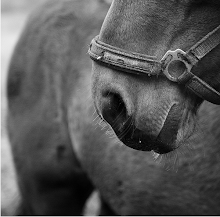
I heart Melbourne: the way it’s people hook into a unique and tailored zeitgeist that governs the way they look, talk, dress, commune, engage, celebrate and relate.
Right or wrong, I love the subtle level of arrogance each Melbournian maintains about the elements that make them identify it as being ‘their city’.
It’s a cultural superiority complex inherited from our Italian influence, I’m sure. Indeed, the ‘Fitzroyalty’ ego is just the underdog-made-good pride of Europeans repackaged for the inner north.
However we are all guilty of drawing a line in the sand as to what makes our enclave of the city the best, yet our innate Melbourne-ness as a whole comes from the our similarities, not our differences.
But where did this innate Melbourne-ness come from? To a foreigner, Sydney may look the most like us superficially, yet the scratching of the surface would reveal a heart that beats to an entirely different rhythm.
The answer lies, I believe, in the cities’ immigration heritage. Sydney’s main ethnic influence is Lebanese, while Melbourne’s is Italian and Greek – it’s the fifth largest Greek city in the world.
At the time of social integration, Anglo Melbourne embraced the Euro-influence of the immigrants, possibly due to the simple fact that they preyed to the same god. Sydney has never fully culturally embraced all that it’s Lebanese could offer. This racial divide has forged a segregation, whereas in comparison, the industries spawned by the European influx i.e. cafes, restaurants and nightlife (none of which existed pre 1960s) have given Melbournians the lifestyle elements they pride themselves on most.
If you tapped a Melbournian on the shoulder at random and asked them if they love their city, chances are they wouldn’t just say yes, but would offer a list of reasons as to why (unlike, say, the average Londoner who could effortlessly roll off a list of the top ten things that ail -and ‘ale’- them).
Melbournians, like New Yorkers seems to pride themselves on all the things that they have been rendered out of necessity: the weather is tumultuous, therefore we have embraced fashion as a daily art form. However the key factor in making Melbourne style is that trends are acknowledged 6 months ahead of Europe and the US due to the fact that collections are shown around the time we are seasonally ready for them. Our northern hemisphere counterparts who have to wait until the weather adjusts and the High Street acknowledges a trend in order for a shift to be validated. Due to the fact it is practically impossible for the average person to wear International fashion labels, once it is imported and prices are converted from Euros and US dollars, Melbourne style is built on the foundation of that style awareness but then the individual’s story is usually told using a combination of local designers and thrift store finds.
The frenetic yet social nature of the city has meant a universal appreciation of coffee and it’s café culture from power walking mums to power lunching business types and every hobo and boho in between. To me, Melbourne’s cultural history is embodied by the caffe latte: introduced by Italians, perfected by Greeks, enjoyed by almost everybody as the totem of all social activity from business to the most intimately personal.
Our love of good food and it’s shared experience, the most Mediterranean of our traits, is such a common interest that to be served an unsatisfactory meal is a personal insult and a professional shame. Entire neighbourhoods are built around cuisines, so much so that I find myself taking an out-of-towner on an ‘eating tour’ more so than any other landmark worth visiting – for what better way to show someone the essence of Melbourne than to eat well?
Yet a testament to the very Melbourne-ness of Melbournians is that Sydney-siders just don’t see what the fuss is all about. The things that they value in a city - based more on geography and displays of wealth– are not readily found here.
Yet it is this egalitarian availability of the finer things in life that make Melbourne culture so united: no matter which point of the compass you reside, which end of the socio-economic spectrum, chances are you value the ‘simple things’ done to a specific design: clothing, food, coffee, a cultural event. There are no financial boundaries or class divides that prevent one from ‘living well’ – a system of values no doubt put in place by the fact that our greatest cultural influence was once one of the poorest.
I heart Melbourne. We’d put it on a T-shirt if it could be abbreviated cleverly. Or would we - for fear that the rest of the world might find out about it too? Even so, they probably wouldn’t love it as much as we did.


What a nicely written post, Papi. I love how much you love our hometown.
ReplyDeletegreat post. And I agree- we heart Melbourne too!
ReplyDeleteand awesome ink